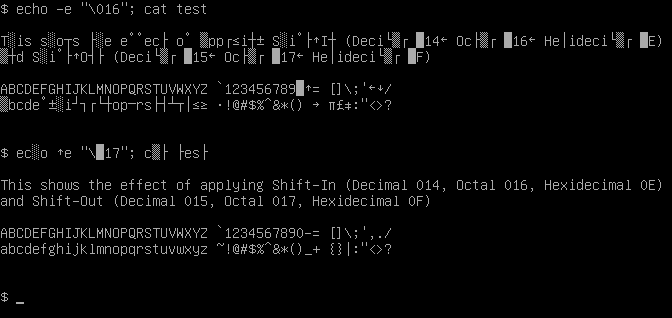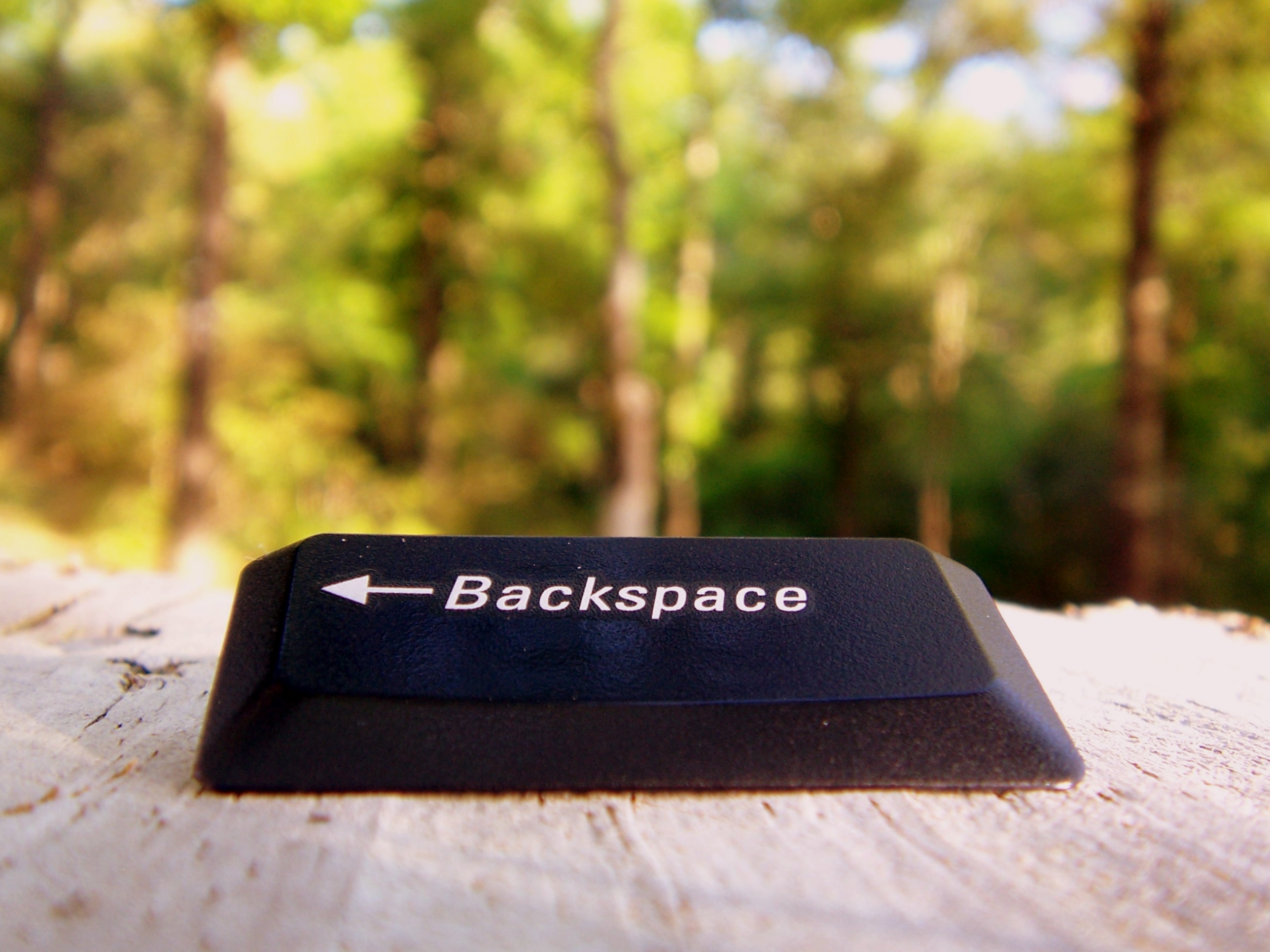|
Display Code
Display code is the six-bit character code used by many computer systems manufactured by Control Data Corporation, notably the CDC 6600, CDC 6000 series in 1964, the CDC 7600, 7600 in 1967 and the following CDC Cyber, Cyber series in 1971. The CDC 6000 series and their successors had 60 bit words. As such, typical usage packed 10 characters per word. It is a six-bit extension of the four-bit BCD encoding, and was referred to as BCDIC (BCD interchange code.) Overview There were several variations of display code, notably the 63-character character set, and the 64-character character set. There were also 'CDC graphic' and 'ASCII graphic' variants of both the 63- and 64-character sets. The choice between 63- or 64-character character set, and between CDC or ASCII graphic was site-selectable. Generally, early CDC customers started out with the 63-character character set, and CDC graphic print trains on their line printers. As time-sharing became prevalent, almost all sites used t ... [...More Info...] [...Related Items...] OR: [Wikipedia] [Google] [Baidu] [Amazon] |
Six-bit Character Code
A six-bit character code is a character encoding designed for use on computers with word lengths a multiple of 6. Six bits can only encode 64 distinct characters, so these codes generally include only the upper-case letters, the numerals, some punctuation characters, and sometimes control characters. The IBM 7 track, 7-track Magnetic tape data storage, magnetic tape format was developed to store data in such codes, along with an additional parity bit. Types of six-bit codes An early six-bit binary code was used for Braille, the reading system for the blind that was developed in the 1820s. The earliest computers dealt with numeric data only, and made no provision for character data. Six-bit BCD, with several variants, was used by IBM on early computers such as the IBM 702 in 1953 and the IBM 704 in 1954. Six-bit encodings were replaced by the 8-bit EBCDIC code starting in 1964, when System/360 standardized on 8-bit bytes. There are some variants of this type of code (see #BCD-varia ... [...More Info...] [...Related Items...] OR: [Wikipedia] [Google] [Baidu] [Amazon] |
Device Control 1
The C0 and C1 control code or control character sets define control codes for use in text by computer systems that use ASCII and derivatives of ASCII. The codes represent additional information about the text, such as the position of a cursor, an instruction to start a new line, or a message that the text has been received. C0 codes are the range 00 HEX–1FHEX and the default C0 set was originally defined in ISO 646 (ASCII). C1 codes are the range 80HEX–9FHEX and the default C1 set was originally defined in ECMA-48 (harmonized later with ISO 6429). The ISO/IEC 2022 system of specifying control and graphic characters allows other C0 and C1 sets to be available for specialized applications, but they are rarely used. C0 controls ASCII defines 32 control characters, plus the DEL character. This large number of codes was desirable at the time, as multi-byte controls would require implementation of a state machine in the terminal, which was very difficult with contemporary electro ... [...More Info...] [...Related Items...] OR: [Wikipedia] [Google] [Baidu] [Amazon] |
Shift Out And Shift In Characters
Shift Out (SO) and Shift In (SI) are ASCII control characters 14 and 15, respectively (0x0E and 0x0F). These are sometimes also called "Control-N" and "Control-O". The original purpose of these characters was to provide a way to shift a coloured ribbon, split longitudinally usually with red and black, up and down to the other colour in an electro-mechanical typewriter or teleprinter, such as the Teletype Model 38, to automate the same function of manual typewriters. Black was the conventional ambient default colour and so was shifted "in" or "out" with the other colour on the ribbon. Later advancements in technology instigated use of this function for switching to a different font or character set and back. This was used, for instance, in the Russian character set known as KOI7-switched, where SO starts printing Russian letters, and SI starts printing Latin letters again. Similarly, they are used for switching between Katakana and Roman letters in the 7-bit version of the Japa ... [...More Info...] [...Related Items...] OR: [Wikipedia] [Google] [Baidu] [Amazon] |
Carriage Return
A carriage return, sometimes known as a cartridge return and often shortened to CR, or return, is a control character or mechanism used to reset a device's position to the beginning of a line of text. It is closely associated with the line feed and newline concepts, although it can be considered separately in its own right. Typewriters Originally, the term "carriage return" referred to a mechanism or lever on a typewriter. For machines where the type element was fixed and the paper held in a moving ''carriage'', this lever was on the left attached to the moving carriage, and operated after typing a line of text to cause the carriage to return to the far right so the type element would be aligned to the left side of the paper. The lever would also usually ''feed'' the paper to advance to the next line. Many electric typewriters such as IBM Electric or Underwood Electric made carriage return to be another key on the keyboard instead of a lever. The key was usually labeled "car ... [...More Info...] [...Related Items...] OR: [Wikipedia] [Google] [Baidu] [Amazon] |
Form Feed
A page break is a marker in an electronic document that tells the document interpreter the content which follows is part of a new page. A page break causes a form feed to be sent to the printer during spooling of the document to the printer. It is one of the elements that contributes to pagination. Form feed Form feed is a page-breaking ASCII control character. It directs the printer to eject the current page and to continue printing at the top of another. It will often also cause a carriage return. The form feed character code is defined as 12 (0xC in hexadecimal), and may be represented as or . In a related use, can be pressed to clear the screen in Unix shells such as bash, or redraw the screen in TUI programs like vi/emacs. In the C programming language (and other languages derived from C), the form feed character is represented as '\f'. Unicode also provides the character as a printable symbol for a form feed (not as the form feed itself). The form feed character is con ... [...More Info...] [...Related Items...] OR: [Wikipedia] [Google] [Baidu] [Amazon] |
Vertical Tab
The tab key (abbreviation of tabulator key or tabular key) on a keyboard is used to advance the cursor to the next tab stop. History The word ''tab'' derives from the word ''tabulate'', which means "to arrange data in a tabular, or table, form". When a person wanted to type a table (of numbers or text) on a typewriter, there was a lot of time-consuming and repetitive use of the space bar and backspace key. To simplify this, a horizontal bar was placed in the mechanism called the tabulator rack. Pressing the tab key would advance the carriage to the next tabulator stop. The original tabulator stops were adjustable clips that could be arranged by the user on the tabulator rack. Fredric Hillard filed a patent application for such a mechanism in 1900. The tab mechanism came into its own as a rapid and consistent way of uniformly indenting the first line of each paragraph. Often a first tab stop at 5 or 6 characters was used for this, far larger than the indentation used whe ... [...More Info...] [...Related Items...] OR: [Wikipedia] [Google] [Baidu] [Amazon] |
Line Feed
A newline (frequently called line ending, end of line (EOL), next line (NEL) or line break) is a control character or sequence of control characters in character encoding specifications such as ASCII, EBCDIC, Unicode, etc. This character, or a sequence of characters, is used to signify the end of a line (text file), line of text and the start of a new one. History In the mid-1800s, long before the advent of teleprinters and teletype machines, Morse code operators or telegraphists invented and used Prosigns for Morse code, Morse code prosigns to encode white space text formatting in formal written text messages. In particular, the International Morse code, Morse prosign (mnemonic break text), represented by the concatenation of literal textual Morse codes "B" and "T" characters, sent without the normal inter-character spacing, is used in Morse code to encode and indicate a ''new line'' or ''new section'' in a formal text message. Later, in the age of modern teleprinters, st ... [...More Info...] [...Related Items...] OR: [Wikipedia] [Google] [Baidu] [Amazon] |
Horizontal Tab
The tab key (abbreviation of tabulator key or tabular key) on a keyboard is used to advance the cursor to the next tab stop. History The word ''tab'' derives from the word ''tabulate'', which means "to arrange data in a tabular, or table, form". When a person wanted to type a table (of numbers or text) on a typewriter, there was a lot of time-consuming and repetitive use of the space bar and backspace key. To simplify this, a horizontal bar was placed in the mechanism called the tabulator rack. Pressing the tab key would advance the carriage to the next tabulator stop. The original tabulator stops were adjustable clips that could be arranged by the user on the tabulator rack. Fredric Hillard filed a patent application for such a mechanism in 1900. The tab mechanism came into its own as a rapid and consistent way of uniformly indenting the first line of each paragraph. Often a first tab stop at 5 or 6 characters was used for this, far larger than the indentation used whe ... [...More Info...] [...Related Items...] OR: [Wikipedia] [Google] [Baidu] [Amazon] |
Backspace
Backspace (, ⌫) is the keyboard key that in typewriters originally pushed the carriage one position backwards, and in modern computer systems typically moves the display cursor one position backwards,The meaning of "backwards" depends on the direction of the text, and could get complicated in text involving several Bidirectional text, bidirectional categories. deletes the character at that position, and shifts back any text after"after" here implies on the same logical line of text that position by one character. Nomenclature Although the term "backspace" is the traditional name of the key which steps the carriage back and/orin some correcting typewriters it did both deletes the previous character, typically to the left of the cursor, the actual key may be labeled in a variety of ways, for example ''delete'', ''erase'', or with a left pointing arrow. A dedicated symbol for "backspace" exists as Miscellaneous Technical#Block, U+232B ⌫ but its use as a keyboard label is not univ ... [...More Info...] [...Related Items...] OR: [Wikipedia] [Google] [Baidu] [Amazon] |
Bell Character
A bell character (sometimes bell code) is a device control code originally sent to ring a small electromechanical bell on tickers and other teleprinters and teletypewriters to alert operators at the other end of the line, often of an incoming message. Though tickers punched the bell codes into their tapes, printers generally do not print a character when the bell code is received. Bell codes are usually represented by the label "BEL". They have been used since 1870 (initially in the Baudot code). To maintain backward compatibility, video display terminals (VDTs) that replaced teletypewriters included speakers or buzzers to perform the same function, as did the personal computers that followed. Modern terminal emulators often integrate the warnings to the desktop environment (e.g., the macOS Terminal will play the system warning sound) and also often offer a silent ''visual bell'' feature that flashes the terminal window briefly. Representations In ASCII the bell characte ... [...More Info...] [...Related Items...] OR: [Wikipedia] [Google] [Baidu] [Amazon] |





